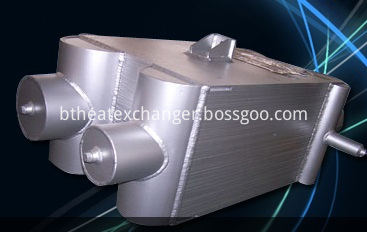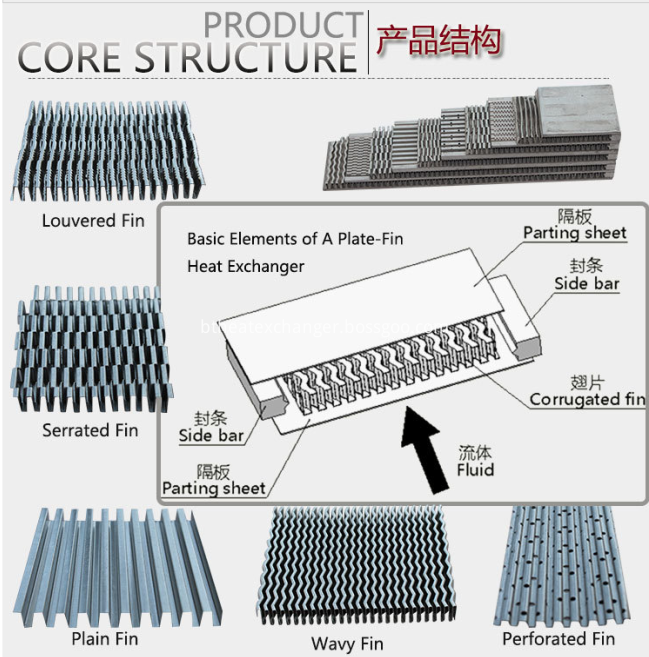The effect of cooling the temperature rise of the motor. : Wind turbine wind consumption surface cooling air temperature rises by 1 mu, the steel plate is welded during the trial production, and the outer ring of the machine is welded with a cooling rib inside the air duct. The cooling air of the inner air passage flows through the coil end, the air gap and the rotor vent hole, and the inner air hole of the cooling rib forms a loop, and the outer air passage cools the wind through the outer surface of the cooling rib. After the trial production of the generator is completed, the performance indicators of the test meet the user requirements. However, compared with imported motors, the efficiency is slightly lower. In order to completely replace the imported motor, the optimized design of the generator was started. 2 Optimization process Analysis of the various loss test values ​​of the generator shows that the generator wind friction is 7.4 kW, which is 3.5 kW higher than the imported motor's 3.9 kW. This is an important factor leading to low generator efficiency. The heat dissipation of the generator depends on the cooling air generated by its internal and external fans. Large air volume and high wind speed are beneficial to further reduce the temperature rise of the generator, but this leads to an excessively large size of the cooling fan, which in turn increases the wind consumption of the generator and reduces the efficiency of the generator. How to properly determine the size of the fan, so that the wind and energy consumption of the generator can be controlled at a low level while ensuring that the temperature rise meets the requirements, which requires detailed heat calculation. For this reason, the heat calculation program of the surface cooling motor is used to analyze and calculate the fan size, fan loss, air volume data, stator coil temperature rise, and rotor copper block temperature rise. First, analyze the corresponding changes of the above data when the inner and outer fan sizes change. At this time, the outer fan is fixed at a certain size. When the inner fan width is constant, the diameter is changed, and the following set of data is calculated by the heating program: inner wind diameter () inner wind loss (w) inner wind path air volume (mVB) stator line H temperature rise (K) rotor copper The temperature rise (K) can be seen from the above calculation data, the influence of the air volume change of the inner air path on the temperature rise of the generator is extremely small. The wind friction of the inner wind path is reduced from 4810W to 2096W, which reduces the air volume of the inner wind path from 1.52m3/S to 1.0mVs, while the temperature rise of the stator only rises by 1K. This seems to be difficult to understand, and it can be found through careful analysis. It is determined by the cooling mode of the generator that the wind speed in the cooling rib (m/s) is the stator coil temperature rise (K) fan I1197 fan n299. For a motor with a concentrator cooler, the total heat of the motor is almost entirely brought by the cooling air volume generated by the internal fan to the cooling pipe of the cooler. In this case, the cooling air volume of the inner air path is critical, and the surface is cooled. In terms of the motor, most of the heat is directly transmitted to the cooling ribs on the surface of the base through the mating surface of the outer circumference of the stator core and the inner circle of the base. A part of the heat is transferred to the outside of the base or the end cover by the hot air inside the motor. On the ribs, the greater flow of air in the inner air path is to bring the air temperature at various points closer to avoid local overheating. In order to verify the influence of the airflow on the wind direction of the generator, the comparison test is as follows: keep the external fan unchanged, and change the internal fan of different sizes to measure the air volume and stator coil temperature rise at this time. The method for measuring the air volume of the inner wind path is as follows: a hole of *6 is drilled in the cooling rib of the air duct inside, and the wind speed is measured by the measuring probe extending into the hole, and the contrast value of the wind speed is the contrast value of the air volume. The measured results are as follows: It can be seen that the temperature rise of the generator is only increased by 2K in the case of an increase of 5 times in the internal air volume, which is basically consistent with the calculation. Next, the external fan loss, the temperature rise of the stator coil, and the temperature rise of the rotor guide bar are analyzed when the external fan size and the external air volume change. At this time, the size of the inner fan remains unchanged, and the outer diameter of the fan is changed without changing the outer fan width. The following data are calculated by the heating calculation program: outer fan diameter (mm) outer fan loss (W) outer air path air volume (mVs) Stator coil temperature rise (K) rotor copper row temperature rise (K) From this set of data, it can be seen that the influence of the air volume change of the external fan on the temperature rise of the generator is obvious. When the diameter of the outer fan is changed from 640mm to 610mm, the wind friction is reduced by 850W, the air volume is reduced by 0.14m3/s, and the stator temperature rise is increased by 1.3K. When the outer fan diameter is changed from 550mm to 520mm, the wind consumption is reduced by 545W and the air volume is reduced. 0.13m3/s, the temperature rise of the stator coil is increased by 2.1K. It can be seen that with the gradual reduction of the air volume of the external fan, the temperature rise of the stator coil increases, and the effect of reducing the wind consumption of the outer fan is gradually improved. Become smaller. From the above analysis and calculation, the following conclusions can be drawn: the correct method for optimizing generator efficiency and reducing wind friction should minimize the size of the inner fan, and the size of the outer fan must be controlled to the correct value so as not to reduce the wind wear. At the same time, the temperature rise of the generator increased too much After repeated calculations, the optimized size of the inner and outer fans of the generator is finally determined, and the fan adopts a low-loss backward tilting blade design. It has been verified by experiments that the optimized generator wind friction is reduced from the original 7.4kW to 3.85kW, which is the level of the imported motor, and the temperature rise of the generator is much lower than that of the imported motor, which has achieved satisfactory results for the user. At present, the optimized design of wind turbines has been put into production in batches to replace imported electricity.
Aluminum, vacuum-brazed, plate-fin heat exchangers can be custom-designed, as every requirement is unique. The cooling way of Heat Exchanger is by air so it's named air-cooled heat exchanger. As the name suggests, air cooled heat exchangers provide a cooling solution for fluids using air which is driven through a fin core by an electrical, hydraulic or mechanically driven fan. Air Cooled Heat Exchangers can be supplied to cool a single fluid, such as engine water, or a combination of fluids as part of a cooling pack which can often include multi fluid circuits cooled by a single fan.
Advantage of Aluminum Air Coolers:
Compact, Lightweight, High Efficient Heat Transfer
Aluminum Core : High strength, high heat conductivity,high safety coefficient.
Industrial Air Cooler,Air Separation Plate Fin Heat Exchanger,Air Cooled Heat Exchanger,Aluminum Air Coolers Wuxi Better Technology Co., Ltd , https://www.btheatexchanger.com


Supersonic Cleaning: High efficiency,little corrosion to metal , few pollution.
Vacuum Brazing : Strict control of vacuum degree, temperature and time.
Argon Welding : Weld Gaps straight appearance , squamous uniform.
Test : Air tightessn test , Hydraulic Pressure
